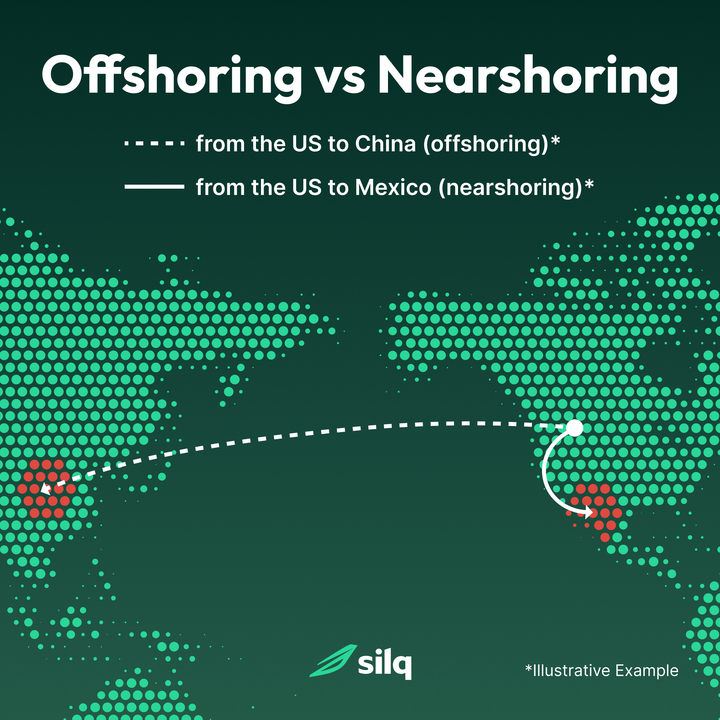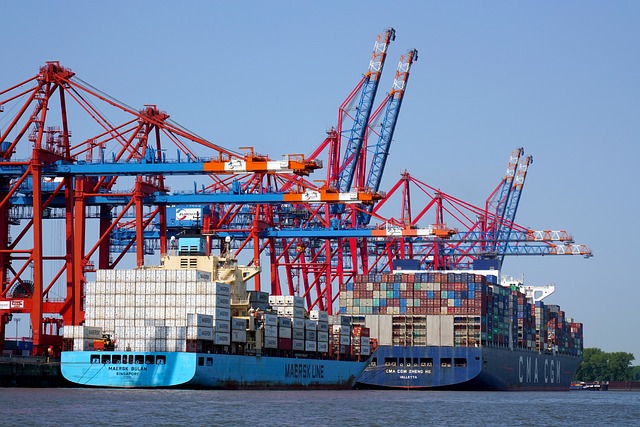Nearshoring: The Latest and Greatest in Fashion Logistics

Introduction
By now, the supply chain has become a household term, usually as a scapegoat. Since 2020, the world has held its collective breath as we watched the global supply chain strain almost to the point of breaking. With the pandemic officially behind us, manufacturers have taken notes on how to make things better.
Now, especially in light of growing geopolitical tensions and strained relations between the US and China, many manufacturers are looking at restructuring their supply chain, building resiliency, and shortening the distance goods and materials need to travel throughout the supply chain. As a result, nearshoring has been a growing trend among manufacturers.
This emerging trend represents a significant departure from the decades-long practice of offshoring to low-cost regions and signifies a transformative approach to managing global supply chains.
While every industry will benefit from stronger and faster supply chains, the Fashion industry, in particular, stands to benefit greatly from this new trend.
In this article, we’ll explore the difference between nearshoring and offshoring and how these choices could affect the fashion industry.
Nearshoring vs. Offshoring: What’s the Difference?
Seldom are domestic goods manufactured “in-house”; most manufacturing processes are outsourced to other countries for a multitude of reasons.
Nearshoring and offshoring are two approaches to outsourcing business operations or services, and they differ primarily in geographical terms.
Nearshoring: This involves moving business processes to a nearby country, usually within the same geographical region or time zone. The main advantages of nearshoring include similar cultural traits, time zone alignment, easier travel and communication, and often legal and regulatory alignment. For instance, a company based in the United States might nearshore its operations, diverting them to Canada or Mexico.
Offshoring: This refers to outsourcing business processes to distant countries, often on another continent. Offshoring can often offer more significant cost savings due to the lower cost of labor in the countries involved. However, this approach also comes with more challenges, such as cultural differences, language barriers, different time zones, longer travel times, and different legal and regulatory environments. An example of offshoring would be a company based in the United States outsourcing operations to India or the Philippines.
The choice between nearshoring and offshoring depends on a variety of factors, including the specific needs of the business, the nature of the work being outsourced, cost considerations, and the company's ability to manage the challenges associated with each approach.
How Fashion Logistics Benefit from Nearshoring
The fashion industry is unique because it requires quick turnaround times, agile responses to rapidly changing trends, and a high degree of coordination between various parts of the supply chain. Nearshoring can offer several benefits for Fashion logistics.
Of course, the speed of a shorter supply chain is one of the most significant benefits of nearshoring. Fashion companies not only have the ability to increase their speed to market, allowing them to capitalize on the latest trends, but it’s decidedly less expensive in terms of shipping and logistics costs and more environmentally sustainable as well.
Additionally, nearshoring allows for better control over the manufacturing process and the product itself. For example, operating in a similar time zone makes real-time communication easier and leaves less room for misunderstanding. Close proximity also means companies have better control of quality processes as they can visit manufacturing sites more readily and frequently.
These factors make nearshoring an attractive strategy for fashion logistics, but it's also essential to remember that it won't be the best fit for every situation. Companies should evaluate their individual circumstances and needs before deciding on a sourcing strategy.
How Fashion Logistics Benefit from Offshoring
There is a reason why so many companies decided to move their manufacturing processes overseas. For decades, China was the go-to source for low-cost labor, allowing companies to manufacture their products for a lower cost / higher profit ratio.
In addition to saving money on manufacturing labor costs, many companies were able to achieve an economy of scale that they couldn’t recognize before due to a scalable workforce that can rapidly expand to meet increased production requirements. This, combined with access to new markets, is what helped elevate the global fashion industry.
However, it's important to note that offshoring also comes with potential downsides, such as cultural and language barriers, quality control issues, political instability, and the potential for negative public perception. Companies must weigh these potential benefits and challenges carefully when considering offshoring as part of their fashion logistics strategy.
Offshoring or Nearshoring: What’s Best for Your Company?
In terms of deciding which direction to move the supply chain, there are a number of factors that should be considered. Both nearshoring and offshoring have their advantages and disadvantages, so the question is: What’s best for your company?
Below are some of the key factors to consider. While this list is by no means exhaustive, these are all critical to operations, profitability, and brand image alike.
- Cost: Offshoring often allows for lower labor and operational costs due to the lower cost of living and labor in some countries. However, these savings need to be balanced against the costs of logistics, shipping, and potential tariff and customs expenses.
- Speed and Time-to-Market: Nearshoring can often lead to faster production times and quicker delivery to market due to geographical proximity. This is particularly important in industries like fashion where trends change rapidly.
- Quality Control: Maintaining consistent quality can be easier with nearshoring due to the ability to visit facilities more frequently and interact more closely with suppliers. With offshoring, the distance and time difference can make quality control more challenging.
- Communication: Similar time zones and cultural contexts can make communication easier with nearshoring. Language barriers and differing business practices can make communication more difficult with offshoring.
- Supply Chain Risk: Geopolitical risks, exchange rate volatility, and potential disruptions in transport due to far-off supply chains can be more significant with offshoring. Nearshoring can sometimes offer a more stable environment, but this depends on the specific countries involved.
- Customer Perception and Brand Image: Consumers are increasingly concerned about sustainability and ethical manufacturing practices. Depending on the situation, both nearshoring and offshoring could have impacts on customer perception and brand image.
- Access to Skills and Expertise: Offshoring can provide access to a wider range of skills and expertise, especially in areas where these skills are in high demand or in short supply in the home country.
These factors can vary significantly depending on the specifics of the company, the industry, and the countries involved. As a result, companies often conduct detailed feasibility studies before deciding on their offshoring or nearshoring strategies.
The Future of the Fashion Industry Supply Chain
In terms of deciding whether to go with nearshoring or offshoring, the best answer may not lie in one extreme or the other but rather in a blend of both. As the fashion industry evolves, so does its approach to logistics. Many companies are now adopting hybrid models that combine elements of both nearshoring and offshoring to maximize their benefits while mitigating their respective downsides.
Fashion companies are increasingly combining offshoring and nearshoring, sometimes referred to as a 'best-shoring' approach. For instance, they might offshore the production of basic, less time-sensitive items to take advantage of lower costs while nearshoring trend-sensitive or high-end items to benefit from faster turnaround times and tighter quality control.
Whether offshoring or nearshoring, the goal of not just the Fashion industry but all industries, is to build a flexible, sustainable, and resilient supply chain that can withstand even the worst of disruptions.
Want to learn more about how to make the most of your supply chain? Contact us today, and let us help you build the supply chain of your dreams. Click here to learn more.
Ready for Supply Chain Predictability?
Importers using Silq ship smarter, safer, and with total control.







